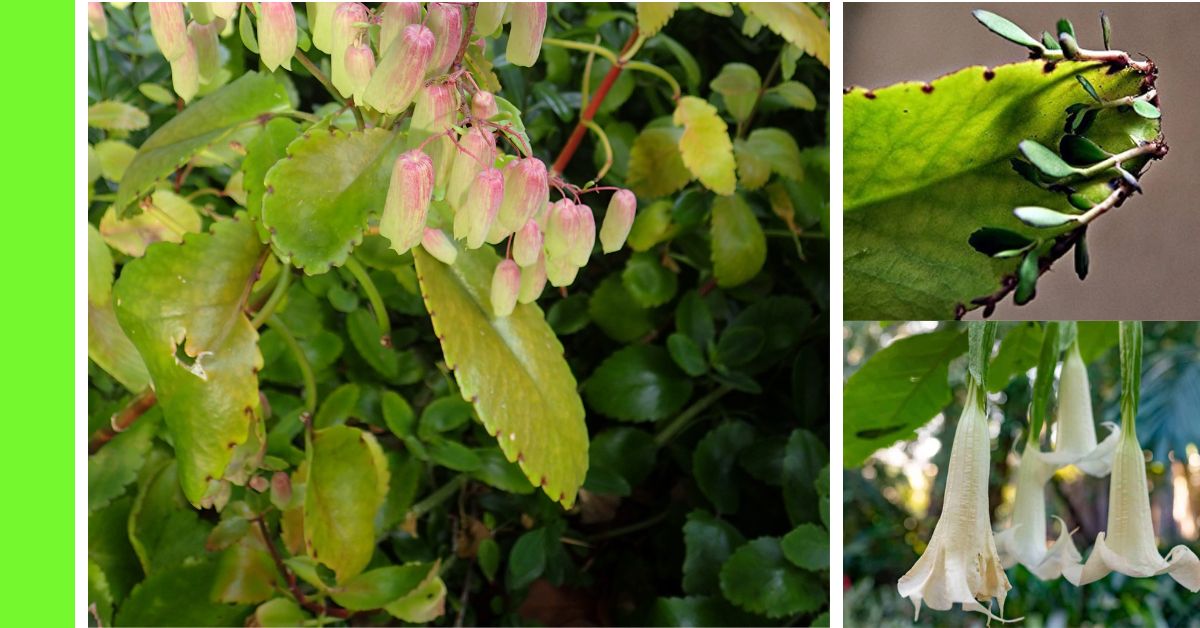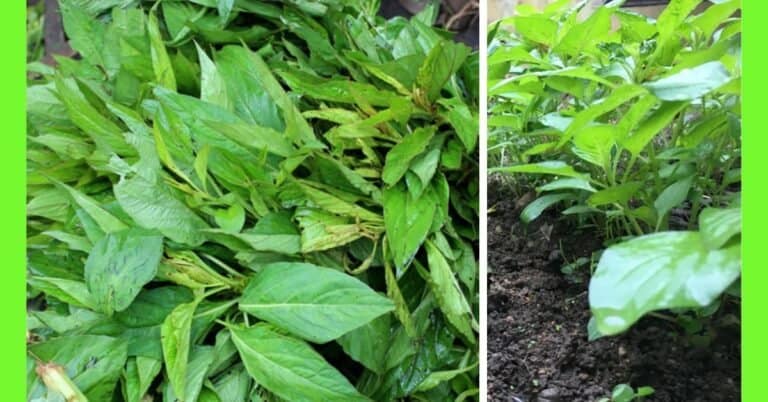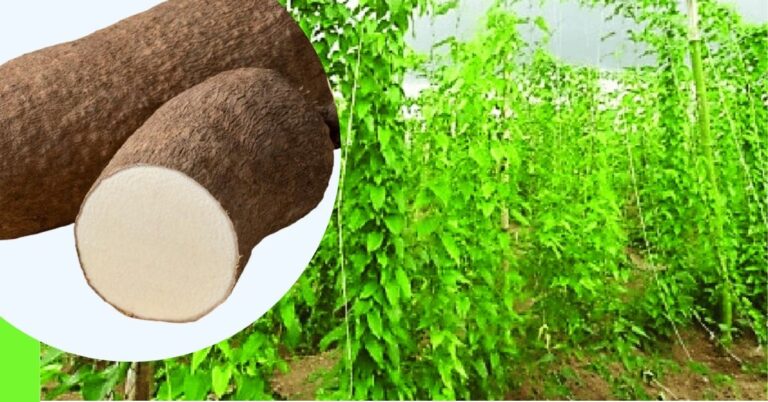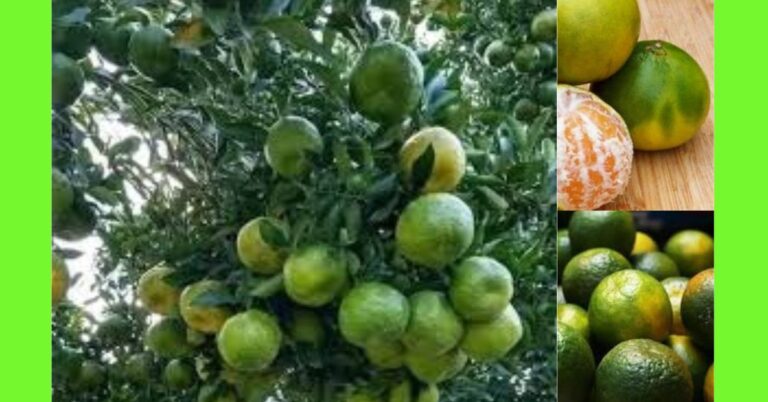How to Plant Wonder of the World

Wonder of the World, scientifically known as Bryophyllum pinnatum or Kalanchoe pinnata, is a succulent medicinal plant highly valued in Nigeria and many parts of the world for its healing properties.
It belongs to the family Crassulaceae and is popularly known by various names such as “Never Die,” “Life Plant,” “Resurrection Plant,” or “Air Plant.”
In Nigeria, it is commonly referred to as “Wonder of the world” because of its unique ability to grow rapidly and regenerate from just a small leaf cutting.
Apart from its decorative appeal, Wonder of the World is widely used in traditional medicine for treating cough, wounds, ulcers, high blood pressure, kidney problems, and skin conditions.
Its ease of cultivation and high tolerance to drought make it an ideal plant for Nigerian soils.
Description of the Plant
The plant is easily identified by its fleshy, thick, and serrated leaves that are usually bright green.
One fascinating feature is that small plantlets grow along the edges of its leaves, which can drop to the soil and develop into new plants.
This natural self-propagation ability has earned it a reputation as a plant of resilience and vitality.
Growth Habit: Upright, fleshy, and herbaceous, typically reaching 60–120 cm in height.
Stem: Thick, smooth, and succulent, often with a pale green appearance and branching at maturity.
Leaves:
- Oppositely arranged, thick, and oval to oblong.
- Scalloped or toothed edges where baby plantlets form.
- Leaves may appear green or slightly reddish at the margins depending on sunlight exposure.
Flowers:
- Produced on tall stalks during maturity.
- Bell-shaped, drooping clusters in shades of pink, red, or greenish-white.
- Flowering is more common in older plants and cooler seasons.
Roots: Fibrous and shallow, adaptable to various soil types.
Planting Season for Wonder of the World
Wonder of the world can be planted all year round in Nigeria because of its hardy nature and adaptability.
However, the best planting season is during the early rainy season, typically between March and June, depending on the region.
During this period, the soil has sufficient moisture to support root development, and the plant can establish itself before the dry season.
In drier regions, farmers may also plant it at the beginning of the dry season (November to December) if they have access to irrigation or consistent watering.
Since the plant thrives in both rain-fed and irrigated conditions, it offers flexibility to growers.
Planting the Wonder of the World
Planting Wonder of the World involves some simple but important steps to ensure proper growth and high yields.
especially if the intention is to grow it for medicinal or ornamental purposes.
Step 1: Choose a Location
The first step is to choose a suitable location.
Wonder of the world grows well in sunny or partially shaded areas.
Select a location that receives at least 4–6 hours of sunlight daily but is also protected from excessive winds.
The soil should be well-drained, as waterlogging can damage the plant’s roots.
Sandy-loam or loamy soils rich in organic matter are ideal.
The plant can be grown in gardens, pots, backyards, and even indoors as long as it receives adequate sunlight.
Step 2: Land Clearing and Preparation
Before planting, clear the land of weeds, stones, and debris.
This prevents competition for nutrients and water.
If the soil is heavy clay, loosen it with organic compost, sand, or well-rotted manure to improve drainage.
Raised beds can also be prepared in areas prone to flooding.
After clearing, till the soil to a fine texture.
Organic matter should be mixed into the soil to enrich it and enhance fertility.
Step 3: Means of Propagation
Wonder of the world can be propagated in three main ways:
- By leaf cuttings: The plant produces baby plantlets along the edges of its leaves, which can be detached and planted directly in the soil.
- By stem cuttings: Mature stems can be cut and planted in soil, where they quickly develop roots
- By seeds: Though less common, Wonder of the world can also be grown from seeds.
The leaf propagation method is the easiest and most common, especially in Nigerian households.
Find your agro suppliers on Floratalk Hub
Step 4: How to Plant Wonder of the World
From Leaf Cuttings
- Select a healthy leaf from a mature plant, thick, green, and undamaged.
- Gently detach the leaf and allow the cut end to dry for 1–2 days to prevent rotting.
- Place the leaf flat on top of well-drained soil or insert the cut end lightly into the soil.
- Keep soil slightly moist, not soaked — water sparingly.
- Put in a bright, warm location with indirect sunlight.
- In 1–2 weeks, tiny plantlets will form at the leaf edges and root into the soil.
- Once plantlets have grown a bit, separate and replant them individually.
From Stem Cutting
- Cut a healthy stem (10–15 cm long) with at least 2–3 leaves.
- Remove lower leaves so the bottom part of the stem is bare.
- Allow the cutting to dry for 1 day to prevent rot.
- Plant the stem upright in well-drained soil (loamy or sandy mix).
- Water lightly and keep in bright, indirect sunlight.
- In 1–2 weeks, roots will form and new growth will appear.
From Seed
Although most people use cuttings, planting from seed is also possible. To plant from seed:
- Obtain viable seeds from mature Wonder of the World plants.
- Prepare seedbeds or pots with fine loamy soil enriched with compost.
- Scatter the seeds lightly on the surface and cover them with a thin layer of soil.
- Water gently to moisten the soil without washing away the seeds.
- Place the pots or seedbeds in a partially shaded area until germination occurs (usually within 1–2 weeks).
- When seedlings are 3–4 inches tall, transplant them to their permanent location, spacing them 30–50 cm apart.
Step 5: Watering
Wonder of the world is drought-tolerant, but regular watering is necessary for fast growth and healthy leaves.
Water young plants every 2–3 days until they are established.
Mature plants require watering once a week, depending on the season.
Avoid overwatering because excessive moisture can cause root rot. In pots or containers, ensure proper drainage holes are present.
Step 6: Apply Manure
Though hardy, Wonder of the world benefits from organic manure or compost.
Apply decomposed animal dung, poultry droppings, or compost around the base of the plant every 4–6 weeks to promote lush leaf growth.
Avoid heavy use of chemical fertilisers, as they can damage the plant.
Maturity and Harvest
Wonder of the world matures quickly and can be harvested within 3–4 months of planting.
The leaves are the main harvestable parts and can be picked individually once the plant is well established.
Leaves should be harvested in the morning or evening when they are fresh and filled with moisture.
Regular harvesting encourages the plant to produce more leaves.
If planted for medicinal purposes, ensure harvesting is done hygienically and leaves are stored in clean, dry containers.
Pests and Diseases
Wonder of the world is relatively resistant to pests and diseases, but under poor conditions, it can be affected by:
- Aphids are small insects that suck sap from leaves, causing them to curl or turn yellow.
- Mealybugs are cotton-like pests that weaken the plant by feeding on sap.
- Spider mites are tiny pests that thrive in hot, dry conditions and cause speckled or discoloured leaves.
- Root rot is caused by overwatering or poorly drained soils.
- Powdery mildew is a fungal disease that leaves white patches on leaves.
Pest and Disease Control
To control pests and diseases in Wonder of the World:
- Cultural control: Ensure proper spacing, avoid waterlogging, and maintain good sanitation around the farm or garden.
- Manual control: Remove infested leaves and destroy them to prevent the spread of pests.
- Biological control: Encourage natural predators like ladybugs that feed on aphids.
- Organic pesticides: Use neem oil, garlic spray, or soap solution to control aphids and mealybugs.
- Fungal control: Apply ash or organic fungicides to infected areas. Reduce humidity by avoiding overcrowding.
By applying these measures, farmers and gardeners can maintain a healthy Wonder of the World plantation.
Wonder of the world is a resilient and medicinal plant that thrives well in Nigeria’s climate.
With proper planting, watering, and care, it can provide a steady supply of fresh leaves for home remedies and ornamental purposes.
Its ability to propagate easily and withstand harsh conditions makes it a valuable plant for every household garden.
By following the outlined steps of choosing a location, land preparation, propagation, planting, watering, manuring, harvesting, and pest control, you can successfully cultivate Wonder of the World in Nigeria and enjoy its many health and economic benefits.
Hope this article was useful.






